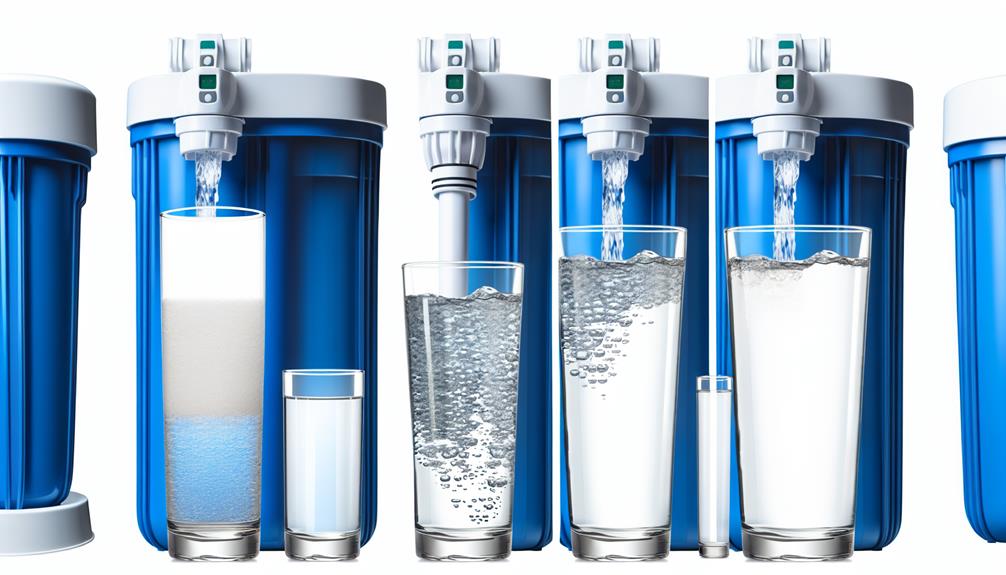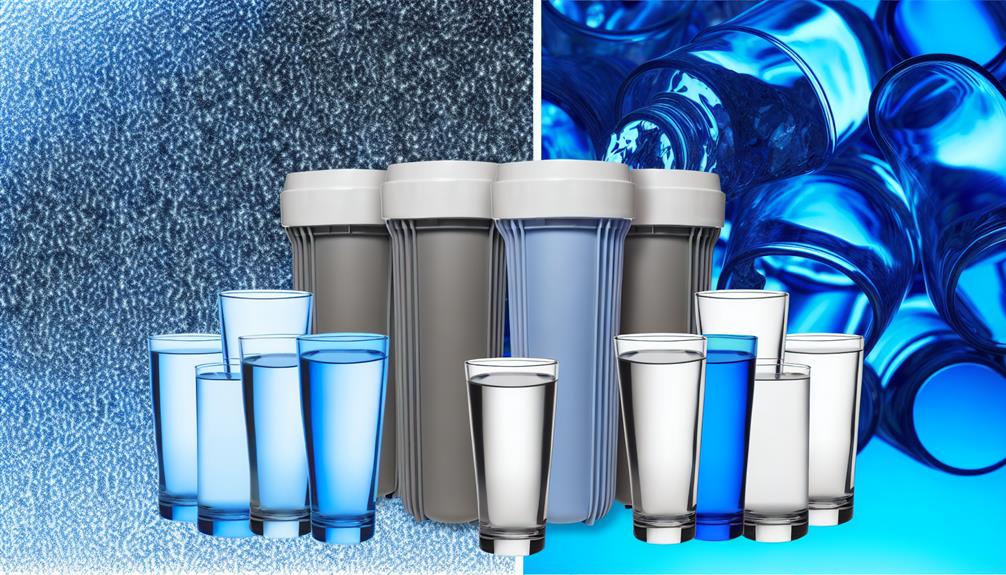Just as a skilled navigator relies on a compass to traverse uncharted waters, you depend on your under-sink water filter to steer clear of contaminants and ensure the purity of your drinking water. In your quest for the optimal filtration system, you're not just looking for a temporary fixture, but a long-term ally in the safeguarding of your health and the wellbeing of your household.
You understand that expert insights can illuminate the intricate balance between performance, ease of maintenance, and cost-effectiveness. As you stand at the crossroads of making an informed choice, consider the impact of your decision not only on your immediate environment but also on the ecological footprint you'll leave behind. The right filter could be a testament to your commitment to both health and sustainability.
As you navigate the waters of technical specifications and user testimonials, consider what lies beneath the surface of marketing claims. Will the most lauded filters meet your expectations, or is there an unsung hero waiting to emerge from the depths? Keep in mind, the clarity of your water may be a reflection of the decision you're about to make.
Assessing Filtration Performance
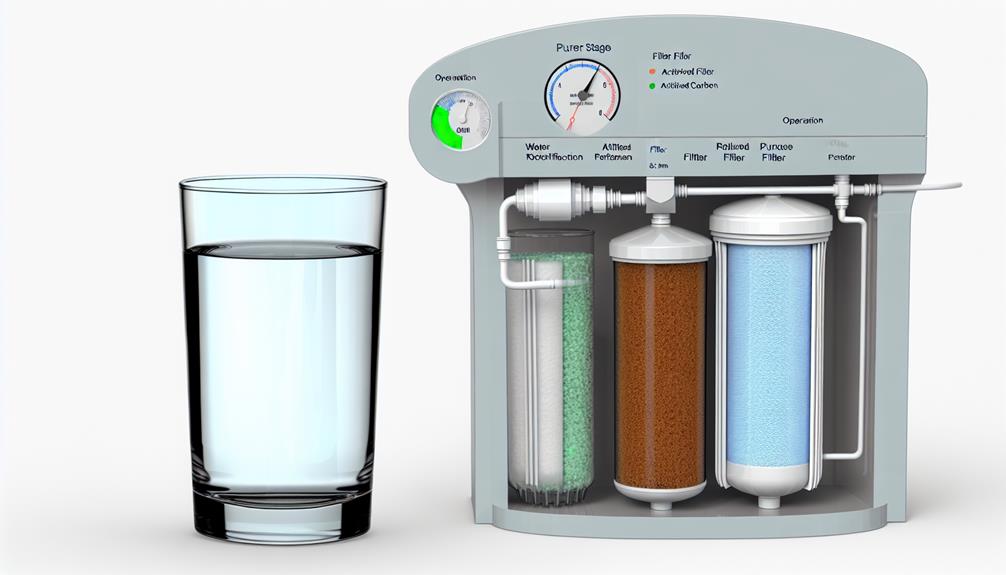
To accurately gauge the efficacy of under-sink water filters, it's crucial to examine their performance metrics, which include contaminant reduction capabilities, flow rate, and filter lifespan.
Filter certification by organizations such as NSF International or the Water Quality Association provides a robust framework for evaluating these systems. Certified filters have undergone rigorous testing to ensure they meet specific standards for reducing contaminant types, including lead, chlorine, cysts, and various chemicals.
The contaminant reduction capabilities are typically quantified by the percentage of contaminants removed, ensuring you're informed about what you're eliminating from your water supply.
It's also vital to look at the flow rate, which indicates how quickly filtered water is delivered. A lower flow rate might mean a more thorough filtration process, but it could also signal a clogged or inefficient filter.
Lastly, filter lifespan is an indicator of both the durability and the ongoing cost of the filtration system. A longer lifespan can translate into fewer replacements and reduced long-term expenses. However, it's essential to balance this with the quality of filtration; a long-lasting filter that inadequately removes contaminants is hardly a prudent investment.
Always prioritize a filter's contaminant reduction performance and certification status to ensure you're getting the most effective filtration technology for your needs.
Installation and Maintenance Ease
You'll find that the ease of installation and ongoing maintenance are critical factors to consider when choosing an under-sink water filter. The complexity of setting up the system and the effort required to keep it functioning optimally can significantly affect user satisfaction. To ensure you select a filter that won't become a hassle, pay attention to the following details:
- Filter space: Check the dimensions of the filter and verify the available space under your sink. Adequate space not only facilitates easier installation but also ensures that filter changes are straightforward. Cramped quarters can lead to challenging maintenance procedures.
- Pre-assembly: Some filters come pre-assembled, which reduces the number of steps required for installation. This can be a significant advantage, especially if you're not particularly handy with tools.
- Tool-free maintenance: Look for systems that offer tool-free filter replacement. This feature allows you to swap out cartridges without the need for wrenches or pliers, streamlining the maintenance process.
- Noise levels: While often overlooked, the noise generated by an under-sink water filter can impact your comfort. Opt for models known for their quiet operation to avoid a constant background hum in your kitchen.
Selecting a water filter with these considerations in mind ensures that you'll spend less time and effort on installation and upkeep, and more time enjoying pure, clean water.
Filter Longevity and Replacement
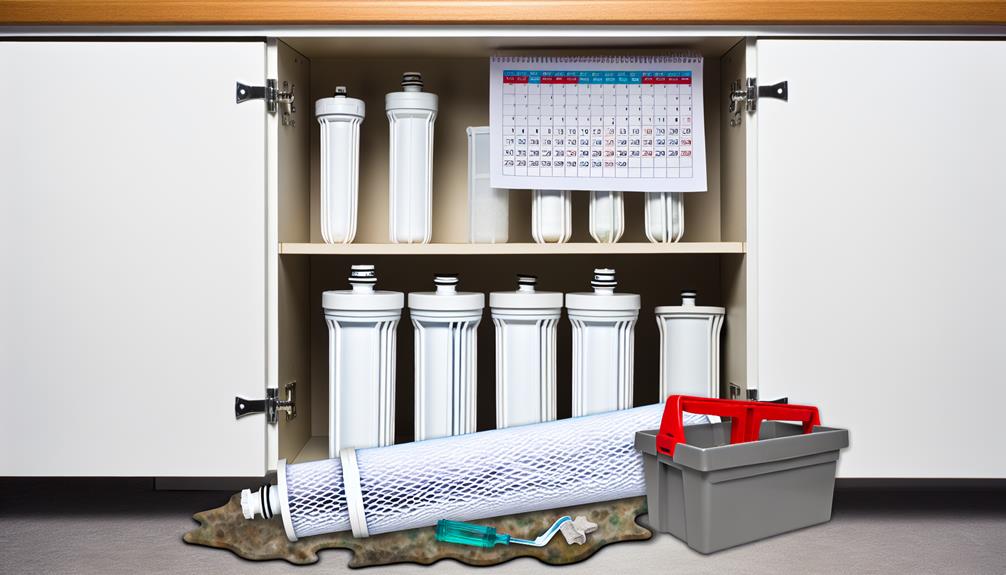
Assessing the longevity of your under-sink water filter is crucial, as it determines how often you'll need to replace the cartridge to maintain optimal water quality. Many modern filters come equipped with replacement indicators that alert you when the filter's efficacy is waning. These indicators may be simple, such as a light that changes color, or more sophisticated, like a digital readout measuring the number of gallons filtered.
Different filter types have varying life spans. Carbon block filters, for instance, typically last between six months to a year, depending on usage and the level of contaminants in your water. Reverse osmosis membranes, on the other hand, can function effectively for up to two years, given they're often preceded by pre-filters that protect them from clogging and degradation.
When considering a filter, always check the manufacturer's specifications for replacement intervals. It's crucial not to overlook this maintenance step, as an outdated filter can result in reduced water quality and may even become a source of contamination itself. Moreover, the longevity of a filter isn't just about the time passed but also about the volume of water it has processed, which is why some systems track water usage as a more accurate measure for replacement needs.
Cost Efficiency Analysis
Evaluating the cost efficiency of under-sink water filters requires analyzing both the initial investment and the ongoing expenses related to filter replacements and potential water savings. To make an informed decision, you need to consider:
- Initial Purchase Price: A thorough price comparison among available models will reveal a range of costs, reflecting differences in filtration technologies, build quality, and feature sets. Higher-end units may offer more sophisticated filtration, but budget options can still provide adequate water purity.
- Filter Lifespan: The longevity of filter cartridges impacts replacement frequency. Investing in a model with a longer-lasting filter can lower long-term costs, even if the initial price is higher.
- Operating Expenses: The efficiency of the unit can affect water and electricity bills. Some filters operate passively, using water pressure alone, while others may require additional power.
- Maintenance Requirements: Consider the ease of maintenance and the availability of replacement filters. Some brands offer subscription services for automatic filter replenishment, which can be cost-effective and convenient.
Health and Environmental Impact
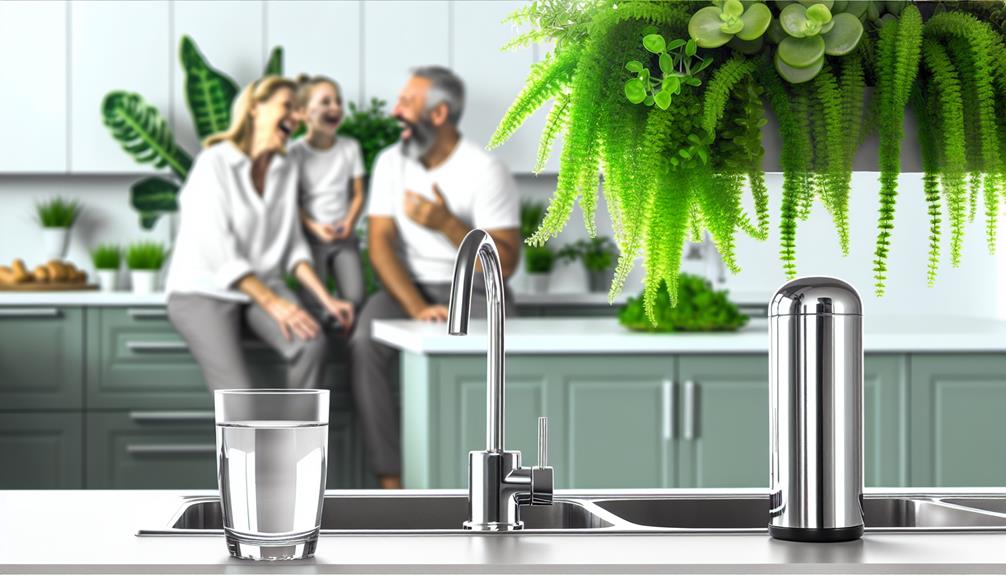
Considering the health and environmental impact of under-sink water filters, it's crucial to understand how these systems not only improve drinking water quality but also contribute to the reduction of plastic waste by lessening reliance on bottled water. These sophisticated filtration units are adept at removing contaminants that can lead to waterborne diseases, thereby safeguarding your health. They're engineered to intercept pathogens, heavy metals, and chemical pollutants, ensuring that the water you consume is free from harmful agents.
Moreover, under-sink water filters have a significant positive environmental influence. By providing immediate access to purified water, they diminish the need for single-use plastic bottles, which are a major contributor to global plastic waste. This reduction in plastic bottle usage directly correlates with decreased plastic pollution, conserving ecosystems and wildlife. Additionally, the energy and resources expended in the production and transportation of bottled water are considerably higher compared to the minimal energy requirements for operating an under-sink water filter.
Your choice to install an under-sink water filter is a step towards a healthier lifestyle and a testament to your environmental consciousness. It represents a proactive measure against the prevalence of waterborne diseases and an impactful action in combating the proliferation of plastic waste.
Conclusion
You've explored the crucial elements: filtration performance, ease of installation, maintenance, and cost efficiency. Remember, a top under-sink water filter balances these aspects while minimizing health and environmental impacts.
As you decide, weigh each filter's longevity against its effectiveness. Opt for a system that delivers pure water without frequent replacements, ensuring both your well-being and the planet's health.
Choose wisely; your selection has far-reaching implications for both personal health and ecological sustainability.
